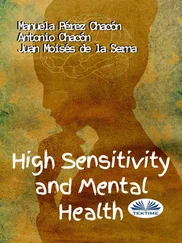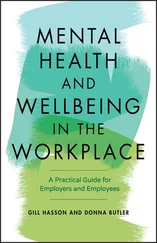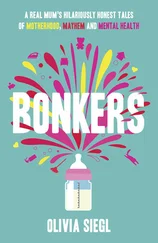Any imperfections that remain in the book, of course, are our responsibility alone.
Introduction
The Mansion of Psychotherapy and the Staircase of Ethics
Picture this: You enter a wonderful mansion. It is over a century old, but clearly is in the process of continual modernization, upgrading, and renovation. However, it retains lots of its traditional luster and elegance. As the mansion has been upgraded and the surrounding neighborhoods have expanded, the mansion has come to fit in and contribute to the community. Although parts of the mansion always need repair, it is the place you have dreamed about since you were much younger. No matter how much time you’ve already spent in the mansion, you are still working on feeling welcome and at home.
From the foyer, you can catch glimpses of the many rooms in the mansion, on many different levels. From this view, some look brand new and others look somewhat familiar, like rooms in other places you’ve been in your life. They might even contain some furniture from your previous houses. One thing is for sure: No matter how many times you visit the different rooms, they seem to change over time. Thus, you continually need to re-acquaint yourself with the rooms.
The only way to get to the rooms is via an immense and complex spiral staircase that moves in and out of the various rooms at various levels. Like the mansion and the neighborhood in which it sits, the staircase keeps changing and is a challenge to climb. At places the staircase has railings and is well lit, but this is not the case everywhere. Some parts of the staircase are downright treacherous, especially if you’re not paying attention. You notice some steps are not level; they might be slippery or have imperfections that make tripping easy. You get the impression that some folks who’ve spent more time in the mansion than you have traversed the staircase without much concern. But upon closer inspection you find that even the long-timers get tripped up—sometimes on the most familiar parts of the staircase going to the most familiar rooms. You, like all who enter the mansion, are naturally prone to trip up at times while navigating the stairs. The fact that, at times, the staircase is uneven, inadequately lit, with handrails missing, makes the navigation fraught with some anxiety. You might wonder, “Can I do this? Can I (continue to) climb this staircase to visit all the rooms?”
Sometimes you’re so motivated to get to a particular room that you want to skip a step, and sometimes these steps you want to skip are the very ones you need to step on to prepare for the next step and the rooms you want to enter. Sometimes you forget what floor you’re on. Sometimes you even forget that there are stairs! You know that climbing the stairs, which is so rewarding, takes effort and persistence. No matter where you are on the staircase, there are more stairs, more rooms to explore, and more spectacular views. What a beautiful mansion to be in!
The metaphor, like any metaphor, is not perfect. The mansion represents you and the profession. You can see the mansion with its staircase and rooms of furniture as the totality of you in the profession. This is where you now live as a developing, or seasoned, psychotherapist. The different rooms represent aspects of you and the profession. Some rooms represent you—your values, needs, motivations, and so forth—and other rooms represent the culture of the profession—its values, traditions, processes, skills, knowledge, and ethics. Many rooms, of course, are furnished and decorated with both personal and professional things. The mansion, then, includes your personal identity and your (new) professional home.
The steps on the spiral staircase represent the process of making ethical decisions and choices. As such, it is a big part of developing your professional identity—making your way in the profession. The choices involve small individual behaviors and broad aspects of what it means to be a therapist or counselor. The staircase connects the elements of yourself—your core—and the profession that allow you to function, both effectively and ethically.
We want to join you, wherever you are on the staircase, on your climb to the next room and/or the next level of the mansion. We will help you navigate the staircase and explore the rooms by sharing observations, stories, information, and questions. So, think of this book as a dialogue between you and us. If we’re successful, you will be better able to understand what it takes to navigate the spiral staircase and anticipate the tripping points and joys of your continued ascent and your entry into the different rooms. You will know what is important to you—your core—and what is important about ethics and ethical (a) identity, (b) thinking and choice making, (c) tripping points, and (d) behaviors.
Before we proceed to three important themes, we need to talk about some terms.
We want to create a common understanding of some terminology. When people write about morals and ethics in philosophy, mental health, medicine, and other fields, they define the words “moral” and “ethical” in a myriad of ways. Some authors use the two terms synonymously; others give them very specific and different meanings. Both terms refer to judgments of right and wrong behavior and the justifications we make for those judgments. In this book we will use the term “ethics” when we refer to professional behaviors, judgments, and decisions. We will use “personal ethics” when we refer to personal beliefs about right and wrong, and “morals” when we are referring to a wider range of behaviors, judgments, and decisions, including those in personal relationships.
Behaving ethically by following rules to avoid punishment has been termed remedial ethics (Knapp et al., 2017). We are all for avoiding punishment, but behaving ethically is not only a matter of following rules—although your professional career might go better when you do. We believe that professionals are motivated to do good work and actualize their highest moral and ethical selves—coming from their core or essential self. Here we are talking about positive ethics (Handelsman et al., 2009), which is the study of ethics that includes higher levels of motivation and behavior. Focusing on positive themes, the ethical ideal, is more effective, more professionally sustaining, and more fun than focusing only on rules and what we shouldn’t do (Handelsman et al., 2009; Knapp et al., 2017). At the same time, we aren’t talking about perfection. Perfection is way overrated and impossible. We are human and bound to make ethical mistakes and missteps. What we do at times like these is what matters (Welfel, 2016).
We’re going to talk a lot about our professional and ethical identities. We will use the terms synonymously, or put a slash between them, because we believe that ethics is such a big part of our professional identity that there is no real difference between the two. Professional/ethical identities are at the heart of good therapy practice, good supervision, and good relationships with other professionals.
What does professional/ethical identity mean? Researchers and experts offer a variety of ideas. Some see professional/ethical identity as an integration between the person and the professional commitment to ethics (Monson & Hamilton, 2010). Lloyd-Hazlett and Foster (2017) describe it as the amount of integration across the counselor’s “personal and professional ethical commitments” (p. 91). Auxier et al. (2003) see the counselor’s ethical identity as one of combining the personal, which includes values and morals, with the professional, which includes roles and decisions. For us, ethical identity is this view of self as an ethical person. Drawing from Blasi (1984) and his understanding of identity, we understand that ethical identity and professional/ethical identity includes this “organization of self-related information” that holds ethical thinking, behavior/choices, and a sense of integrity (congruence and consistency of who one is) as key or critical to continue to be the person and the professional they are (Anderson, 2015).
Читать дальше












